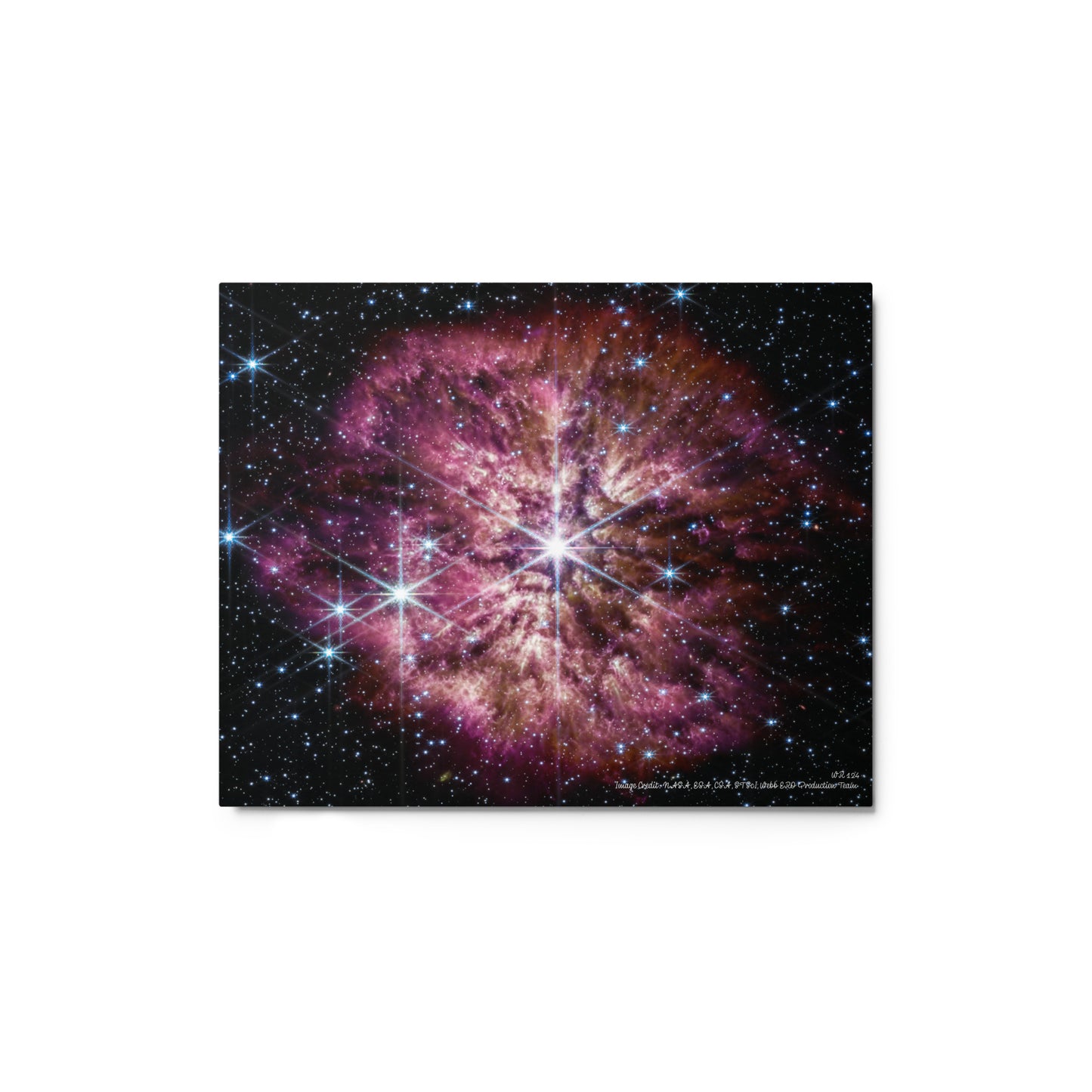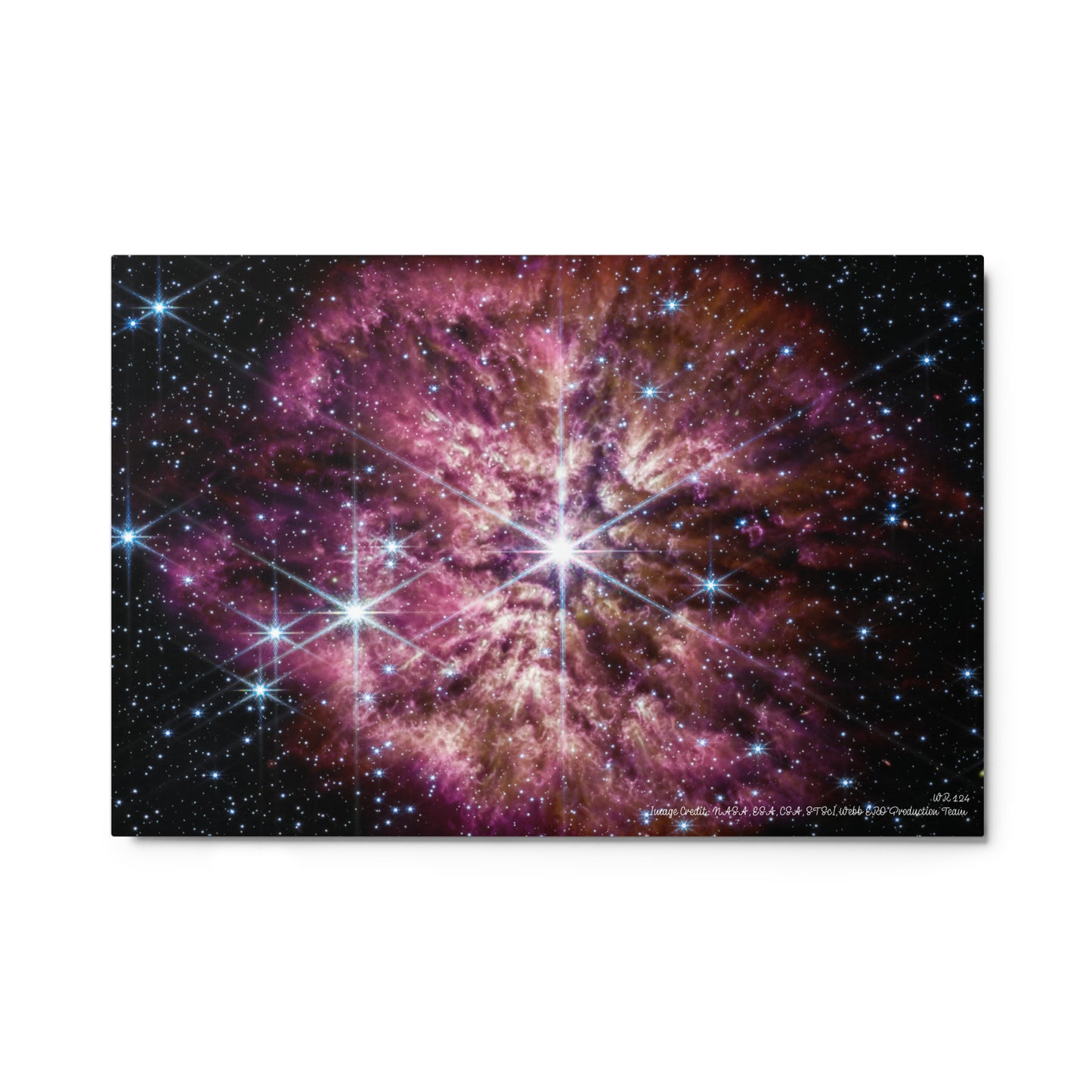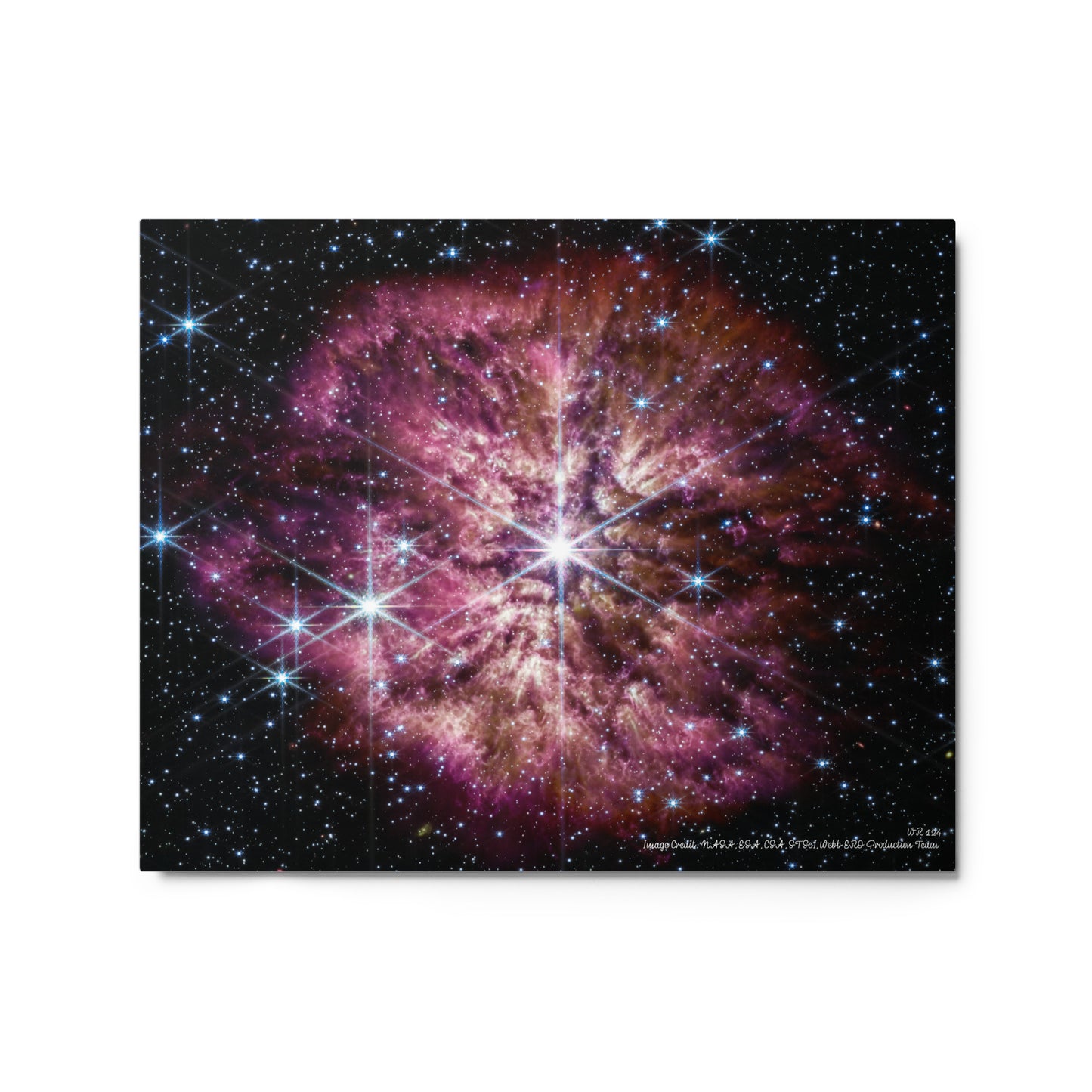WR 124, Metal prints
WR 124, Metal prints
Couldn't load pickup availability
Bring the Universe Home: High-Quality Metal Prints
Transform your space with stunning cosmic wonders. These high-quality metal prints showcase the universe's vibrant colors and intricate details in a way that has never been seen before.
Lasting Visions of the Cosmos:
Scratch- and Fade-Resistant: Crafted with a durable aluminum surface, these prints withstand everyday wear and tear.
Exceptional Vibrancy: The meticulous printing process utilizes the metal's reflective properties to create stunningly vivid colors that bring the cosmos to life.
Easy to Care For: Simply wipe clean with a damp cloth, making them ideal for high-traffic areas.
Multiple Sizes Available: Find the perfect fit for your space, whether you're seeking a captivating focal point or a mesmerizing gallery wall.
Modern Elegance:
These metal prints boast a sleek and contemporary aesthetic, a touch of sophistication. The artwork appears almost luminescent against the wall, adding a unique dimension to your décor.
WR 124:
The luminous, hot star Wolf-Rayet 124 (WR 124) is prominent at the center of the James Webb Space Telescope's composite image, combining near-infrared and mid-infrared wavelengths of light. The star displays the characteristic diffraction spikes of Webb's Near-Infrared Camera (NIRCam), caused by the physical structure of the telescope itself. NIRCam effectively balances the brightness of the star with the fainter gas and dust surrounding it. At the same time, Webb's Mid-Infrared Instrument (MIRI) reveals the nebula's structure.
Background stars and galaxies populate the field of view, peeking through the nebula of gas and dust ejected from the aging massive star, which spans 10 light-years across space. A history of the star's past episodes of mass can be read in the nebula's structure. Rather than smooth shells, the nebula is formed from random, asymmetric ejections. Bright clumps of gas and dust appear like tadpoles swimming toward the star, with tails streaming out behind them, blown back by the stellar wind.
Constellation: Sagitta
Dimensions: Image is about 2.2 arcminutes across (10 light-years)
Distance: 15,000 light-years
Exposure Dates: 2 June and 10 June 2022
Image Credit: NASA, ESA, CSA, STScI, Webb ERO Production Team
Share




